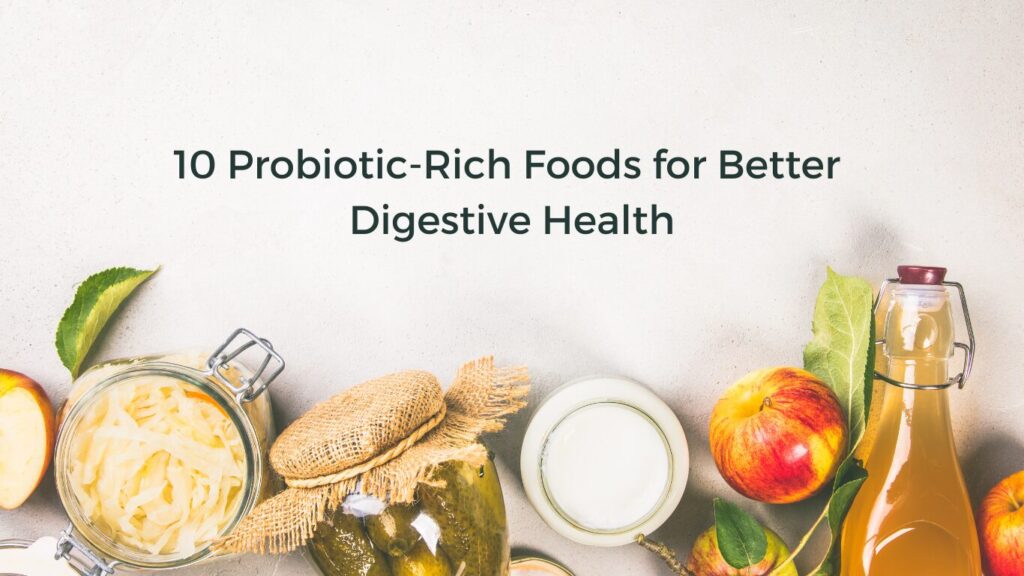The human microbiome is an extraordinary ecosystem within each of us, containing trillions of bacteria, fungi, and other microbes that play essential roles in our health. Our gut, in particular, is home to a diverse range of beneficial bacteria that support everything from digestion and immune function to mood and metabolism. These microbes work together to maintain a healthy balance within our bodies, breaking down nutrients, producing vitamins, and keeping harmful pathogens at bay.
In recent years, scientists have discovered that an imbalance in the gut microbiome-often due to poor diet, stress, medications, or environmental factors-can contribute to a variety of health issues, including digestive disorders, hormone imbalances, immune dysfunction, and even mental health challenges. That’s where probiotics come in. These “good bacteria” help restore balance in the microbiome, support digestive health, and promote a more resilient immune system.
One of the best ways to nurture a healthy gut is by regularly consuming probiotic-rich foods. These foods contain live bacteria that can help replenish and maintain the delicate balance of the microbiome. Below, we’ll explore ten excellent probiotic sources you can incorporate into your diet, along with tips on how to choose the best quality products to maximize your benefits. Whether you’re looking to improve digestion, boost immunity, or simply support overall wellness, these foods offer a natural and delicious path to a healthier gut.
10 Probiotic-Rich Foods for Better Digestive Health (with Buyer’s Tips)
Incorporating probiotic-rich foods into your diet is a fantastic way to support digestion, immunity, and overall well-being. Here’s a guide to ten powerful sources of probiotics with tips on how to choose the best products for maximum health benefits.
1. Yogurt
Yogurt contains live bacterial cultures, such as Lactobacillus and Bifidobacterium, which support gut health.
Buyer’s Tip: Look for plain, unsweetened yogurt labeled “live and active cultures.” Avoid products with added sugars or artificial flavors, as these can counteract the benefits. Greek yogurt can be a thicker option, and non-dairy alternatives like almond or coconut yogurt also contain probiotics if fortified.
2. Kefir
Kefir is a fermented milk drink, often richer in probiotics than yogurt, with a variety of beneficial bacterial and yeast cultures.
Buyer’s Tip: Choose plain, unsweetened kefir, and check for a label that specifies live cultures. Both dairy and non-dairy kefirs are available. If you’re new to kefir, start with a small serving as its unique taste and texture can take some getting used to.
3. Sauerkraut
Sauerkraut is fermented cabbage that’s high in beneficial lactic acid bacteria, as well as fiber and vitamins.
Buyer’s Tip: Opt for refrigerated, unpasteurized sauerkraut, which retains live probiotics. Shelf-stable varieties are often pasteurized, which can kill the live cultures. Look for ingredients that list only cabbage and salt, as added preservatives may affect gut health.
4. Kimchi
This Korean fermented vegetable dish, often made with cabbage and radishes, is full of Lactobacillus bacteria and antioxidants.
Buyer’s Tip: Buy refrigerated kimchi with a short ingredients list, ideally just vegetables, spices, and salt. Avoid brands with preservatives, as these can interfere with fermentation. Be mindful of spice levels if you’re sensitive to heat, as kimchi can be quite spicy.
5. Miso
Miso is a fermented paste made from soybeans, rice, or barley, commonly used in Japanese cooking.
Buyer’s Tip: Look for unpasteurized miso, as pasteurization can destroy live probiotics. Choose organic miso to avoid genetically modified soybeans and shop for darker varieties (like red miso) for a richer flavor, or lighter ones (like white miso) for a milder taste.
6. Tempeh
Tempeh is a fermented soybean product with a firm texture and a slightly nutty flavor.
Buyer’s Tip: Choose plain, organic tempeh to avoid GMOs and added sugars. Fresh tempeh should have a clean, earthy aroma—avoid any that smell sour or off. Tempeh also comes in a variety of grain mixes; opt for a single-grain option if you have food sensitivities.
7. Kombucha
Kombucha is a fermented tea drink made with a SCOBY (symbiotic culture of bacteria and yeast) and is naturally fizzy.
Buyer’s Tip: Look for kombucha with less than 5 grams of sugar per serving and ensure it’s labeled as containing live cultures. Avoid brands with added fruit syrups or artificial sweeteners. If you’re new to kombucha, start with a small amount to see how your gut responds, as it can be a bit acidic.
8. Pickles
Some pickles are fermented in saltwater brine, which encourages beneficial bacteria growth.
Buyer’s Tip: Buy pickles labeled as “fermented” or “containing live cultures” and avoid those made with vinegar, as vinegar-brined pickles lack probiotics. Choose refrigerated pickles to ensure they retain active cultures.
9. Natto
Natto is a traditional Japanese food made from fermented soybeans and is rich in both probiotics and the enzyme nattokinase.
Buyer’s Tip: Look for organic natto to avoid GMOs. Natto has a strong smell and slimy texture, so consider purchasing small amounts if it’s new to you. Asian markets or specialty stores often carry natto, but you may also find it in the frozen section of health food stores.
10. Sourdough Bread
Sourdough is made using a fermentation process that creates natural lactobacilli and yeasts.
Buyer’s Tip: Buy sourdough from a local bakery or make it at home to ensure it’s naturally fermented. Some commercial “sourdough” breads are not traditionally fermented and may lack probiotics. Whole-grain options are a better choice as they provide more fiber, which supports gut health.
These probiotic-rich foods offer an easy, enjoyable way to improve digestive health and balance your microbiome. Remember to start with small amounts if you’re new to fermented foods, as they can sometimes be intense on the gut.
For personalized guidance on how to incorporate probiotics into your diet, explore my one-on-one coaching services at Nourished and Glowing, where you’ll find resources to support your journey to optimal digestive health.











